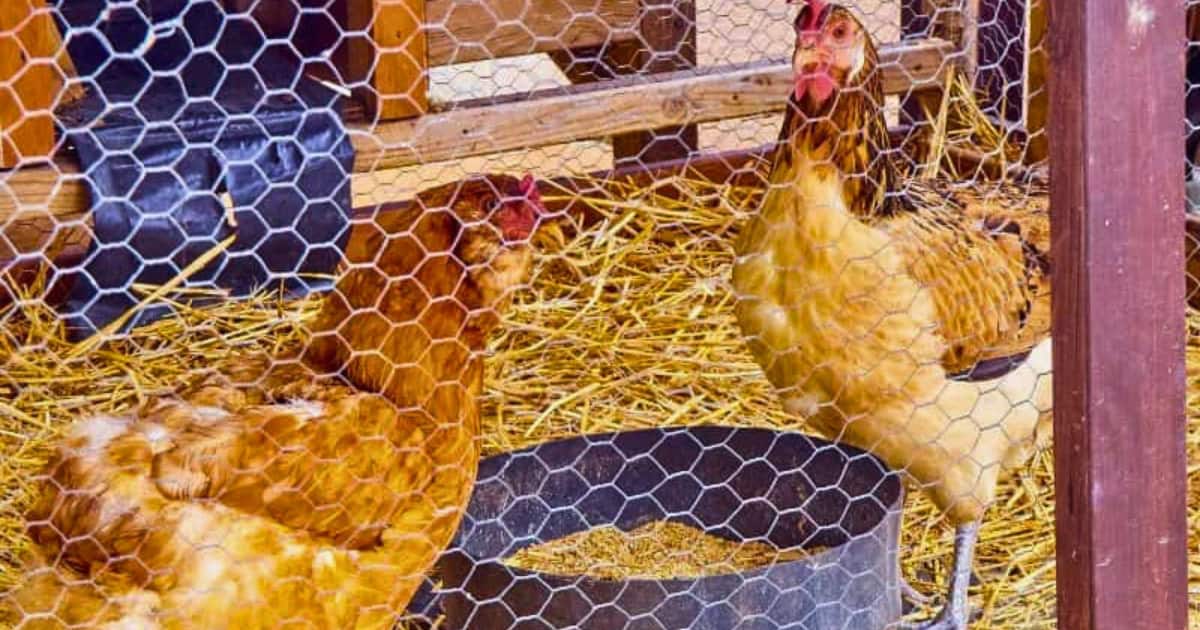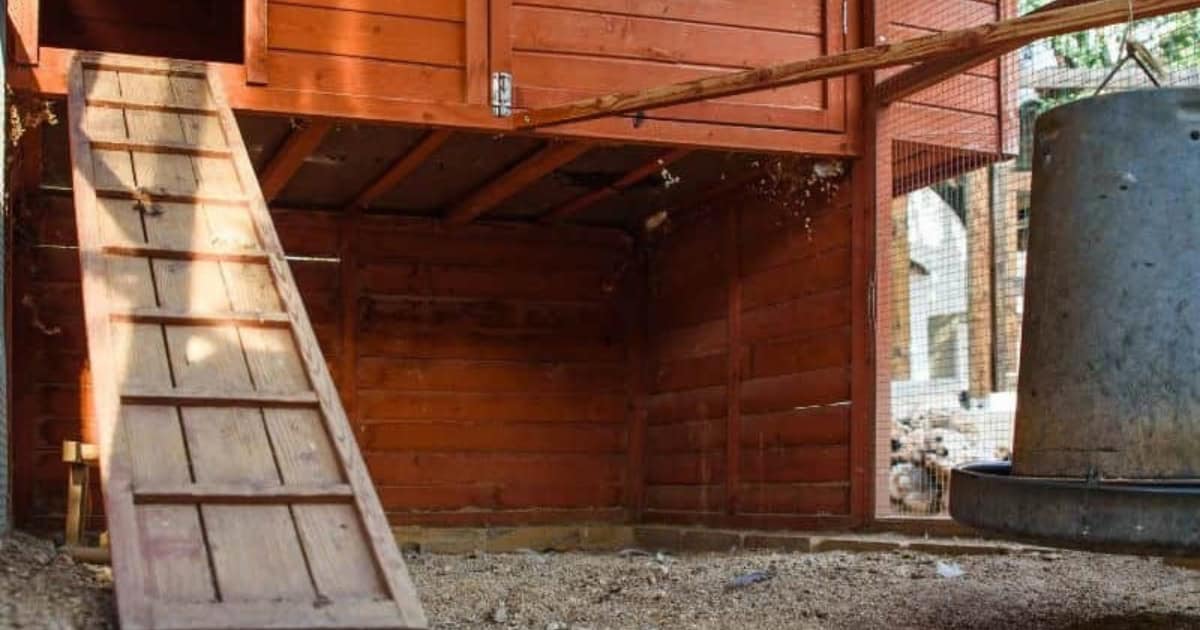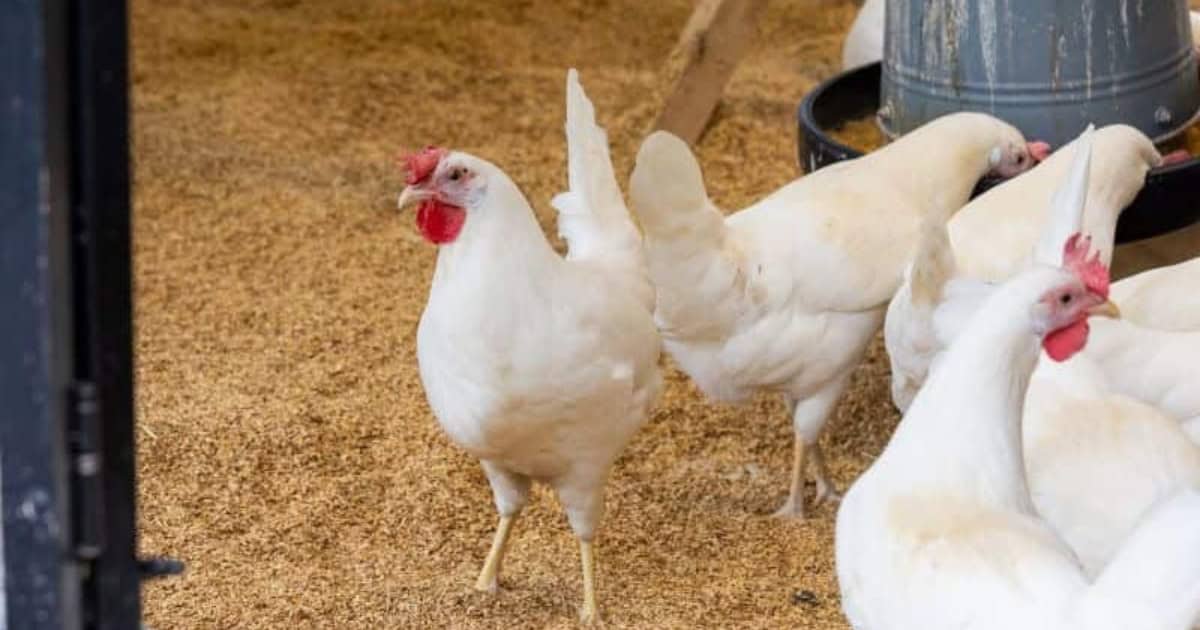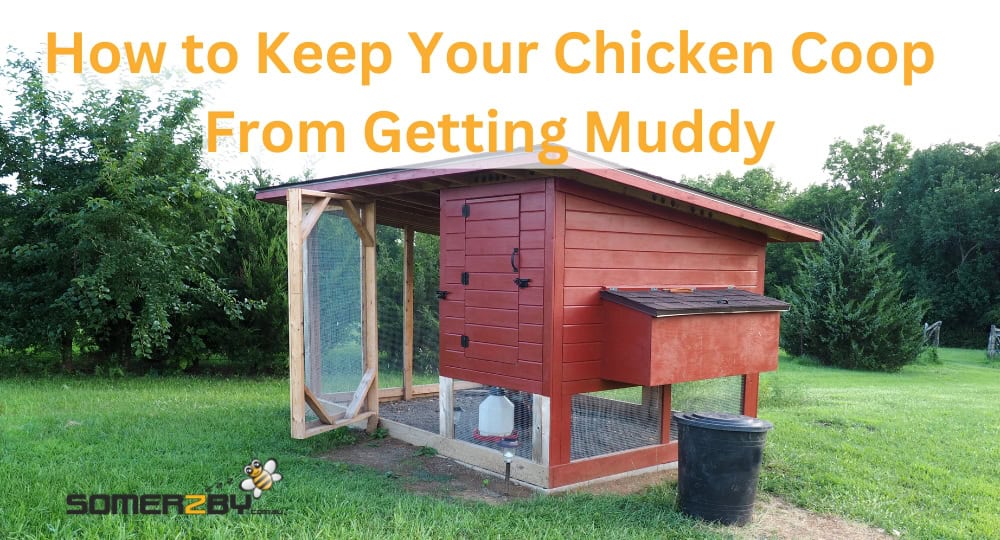Chickens, How To, Info Guides
How to Keep Chicken Coop from Getting Too Muddy
If you’re anything like me, your chickens are more than just birds – they’re family. But let’s face it, keeping your chicken coop clean and dry can be quite a challenge.
I may not be a chicken whisperer, but I’ve dedicated ample time to researching and experimenting with various methods to ensure my feathered friends lead fulfilling lives.
If you’re ready to tackle the challenge of maintaining a mud-free coop, whether you’re a seasoned keeper or new to chicken raising, let’s learn how to keep your chicken coop from getting muddy!
Best Ground Cover Options to Prevent Mud in Chicken Runs
If you’re tired of dealing with a muddy chicken run every time it rains, you’re not alone.
It’s a common problem that many chicken keepers face, but the good news is there are several effective ground cover options that can help keep your run dry and mud-free.
Wood Chips
Wood chips and pine shavings are inexpensive, readily available, and incredibly effective at absorbing moisture, ensuring your chickens can strut around without getting their feet caked in mud.
When choosing wood chips for your coop, look for larger chips rather than fine sawdust as the bigger chips will last longer and provide better drainage.
To ensure proper coverage, aim to keep the woodchips level, creating a layer approximately 2-3 inches thick across the entire run area, and be sure to replace them as needed when they start to break down.

Straw and Hay
Straw and hay are my personal choice to prevent muddy chicken coops. When spread generously over muddy areas, they provide a dry and comfortable surface for chickens’ feet to navigate.
Their absorbent nature helps soak up excess water, reducing the risk of bacterial growth and foul odours.
Straw and hay serve as excellent chicken coop bedding options, providing insulation against cold temperatures to keep the coop warmer in cooler months.
Consistently replenishing the straw or hay is crucial to maintain its effectiveness in preserving a clean and healthy environment for the chickens.
Pine Needles
Another option for ground cover is pine needles. If you have pine trees on your property, you can easily collect the fallen needles and spread them in your chicken run.
This option provides a pleasant scent and can help repel insects, but they do break down more quickly than wood chips.
While pine needles can be a good choice for a dry chicken run, they’re not the best option if you’re dealing with a lot of mud.
They tend to mat down and can actually make the mud problem worse over time. If you do decide to use pine needles, be prepared to replace them more frequently than wood chips.

Rubber Mats
Rubber mats are another viable option to consider, particularly in high-traffic areas of your chicken run. You can place them near the coop door, under feeders and waterers, or anywhere else where muddy conditions are common.
Rubber mats provide a solid surface for your chickens to walk on and can help prevent mud from being tracked into the coop.
Look for mats with a textured surface to provide good traction for your chickens’ feet. You can easily hose off the mats when they get dirty, and they’ll last for years with proper care.
Small Pebbles or Gravel
For a more permanent solution to mud in your chicken run, consider using small pebbles or gravel. A layer of pebbles or gravel can help improve drainage and prevent mud from forming in the first place.
It’s important to choose the right size pebbles, though – too small and they can be difficult for your chickens to walk on, too large and they won’t provide enough drainage.
Keep in mind that while this option can be effective, it can also be more expensive than other ground cover choices.
Grass Clippings
If you have a large lawn and regularly mow your grass, you may want to consider using your grass clippings as a ground cover in your chicken run. Grass clippings are free, readily available, and can help absorb moisture in the run.
Just be sure to use clippings from a lawn that hasn’t been treated with any chemicals or pesticides.
Grass clippings decompose rapidly, so you’ll want to top up your ground cover frequently to keep it looking fresh. Consider blending wood chips or other materials with your grass clippings to make them last longer.

How to Improve Drainage in Your Chicken Coop Area
In addition to using ground cover options to prevent mud, it’s also important to make sure your chicken coop area has good drainage.
Standing water and poor drainage can lead to a host of problems, including muddy messes, odours, and even health issues for your chickens.
Identify and Address Grading Issues
One of the first steps in improving drainage around your chicken coop is to identify any grading issues. Take a look at the ground around your coop and run – does it slope away from the structure, or does water tend to pool in certain areas?
If you notice any drainage issues such as low spots or areas where water collects, you may need to regrade the soil to encourage proper drainage.
Create a Well-Drained Area
In addition to fixing grading issues, you can create a well-drained area around your chicken coop by surrounding it with materials that encourage good drainage.
Gravel or stone borders are a great option – they’ll help water flow away from the coop, keeping everything nice and dry.
Redirect Water Away from the Coop
Another way to improve drainage around your chicken coop is to redirect water away from the structure.
This can be as simple as installing gutters and downspouts on your coop to channel water away from the coop or create shallow ditches to direct and drain water away.

Tips for Maintaining a Dry and Clean Chicken Coop
Maintaining your chicken coop and keeping it dry and clean is essential for the health and happiness of your flock.
In addition to using ground cover options and improving drainage, there are several other steps you can take to prevent a muddy chicken coop.
Use Absorbent Bedding Materials
One of the most important things you can do to keep your chicken coop dry is to use absorbent bedding materials. Wood shavings, shredded paper, and hay are popular choices for coop bedding. They’re affordable, readily available, and do a great job of absorbing moisture and odours.
Clean Regularly
Plan to clean your coop at least once a week, or more often if needed. Remove any wet or soiled bedding, and replace it with fresh, dry material.
Use a shovel to remove any built-up chicken poop or debris, and consider using a natural cleaning solution to disinfect surfaces.
Provide Adequate Ventilation
Proper ventilation is another key factor in keeping your chicken coop dry and clean. Good ventilation helps regulate temperature and humidity levels and prevents the buildup of harmful ammonia gases from chicken manure.
When designing your coop, be sure to include plenty of windows or vents to allow for good airflow. Cover any openings with wire to prevent predators from entering the coop.
Manage Spilled Feed and Water
Finally, it’s important to manage any spilled feed or water in your chicken coop to prevent moisture buildup and mould growth. Use feeders and waterers that are designed to minimise spills, and clean up any spills promptly.

Utilising Free-Range Time to Minimise Mud in the Coop
While using ground cover options and improving drainage can go a long way in preventing mud in your chicken coop and run, another strategy is to utilise free range time to minimise the amount of time your chickens spend in potentially muddy areas.
Encourage Foraging
Chickens and mud don’t mix well. To keep your feathered friends clean and dry, encourage them to forage in other parts of your yard or property.
To encourage foraging, you can create designated foraging areas in your yard by planting chicken-friendly plants, such as clover, dandelions, or chickweed.
You can also scatter scratch grains or other treats in areas away from the coop to encourage your chickens to explore.
Rotate Free-Range Areas
If you have a large enough property, you may also want to consider rotating your chickens’ free-range areas to prevent overgrazing and minimise mud.
By moving your chickens to a new area of the yard every few weeks or months, you can give each area time to recover and regrow.
Provide Designated Dust Bathing Spots
Want to keep your chicken coop mud-free? Set up a dust bath area outside for your feathered friends to clean themselves and prevent parasites.
Chickens go crazy for a good dust bath, so giving them their own designated spot will help keep the mud out of their living space.

Toni’s Wrap
With a little bit of effort and some smart strategies, you’ll be well on your way to keeping your chicken coop mud-free.
Remember, it’s all about finding the right ground cover, improving drainage, and maintaining a clean, dry environment for your feathered friends.
By implementing these practices consistently, you’ll not only reduce the stress of constant clean-ups but also create a safer and more enjoyable space for your chickens to thrive.




